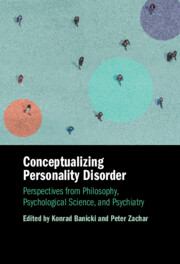 Conceptualizing Personality Disorder
Conceptualizing Personality Disorder Book contents
- Conceptualizing Personality Disorder
- Conceptualizing Personality Disorder
- Copyright page
- Contents
- Figures
- Tables
- Contributors
- Introduction
- Part I Historical Perspectives
- Part II Contemporary Approaches to Traditional Conceptual Perspectives
- Part III Novel Conceptual Approaches to Personality Disorder
- Part IV Exploring Negative Consequences of Diagnosing Personality Disorder
- Part V Perspectives on Borderline and Narcissistic Personality
- 19 How and Why Emptiness Manifests in Everyday Life
- 20 Empathy Deficits in the Development and Maintenance of Narcissistic Personality Disorder
- 21 Interaffectivity Disturbances in Narcissistic Personality Disorder
- 22 Narrative Accounts of the Self
- Index
- References
22 - Narrative Accounts of the Self
Differentiating Narcissistic from Non-Narcissistic Personalities
from Part V - Perspectives on Borderline and Narcissistic Personality
Published online by Cambridge University Press: 25 June 2025
- Conceptualizing Personality Disorder
- Conceptualizing Personality Disorder
- Copyright page
- Contents
- Figures
- Tables
- Contributors
- Introduction
- Part I Historical Perspectives
- Part II Contemporary Approaches to Traditional Conceptual Perspectives
- Part III Novel Conceptual Approaches to Personality Disorder
- Part IV Exploring Negative Consequences of Diagnosing Personality Disorder
- Part V Perspectives on Borderline and Narcissistic Personality
- 19 How and Why Emptiness Manifests in Everyday Life
- 20 Empathy Deficits in the Development and Maintenance of Narcissistic Personality Disorder
- 21 Interaffectivity Disturbances in Narcissistic Personality Disorder
- 22 Narrative Accounts of the Self
- Index
- References
Summary
In this chapter, I present Three-Tiered Narrativism, a version of the narrative account of the self. I show how this framework can help us differentiate individuals with pathological narcissism from healthy personalities. After explaining what characterizes pathological narcissism using this framework, I show that the framework can more simply explain the various diagnostic criteria laid out for Narcissistic Personality Disorder in the DSM-5. I then show how this framework more easily lends itself to the dimensional model of personality. Finally, I gesture at how this framework may be useful in differentiating all the Cluster B Personality Disorders.
Keywords
Information
- Type
- Chapter
- Information
- Conceptualizing Personality DisorderPerspectives from Philosophy, Psychological Science, and Psychiatry, pp. 386 - 399Publisher: Cambridge University PressPrint publication year: 2025